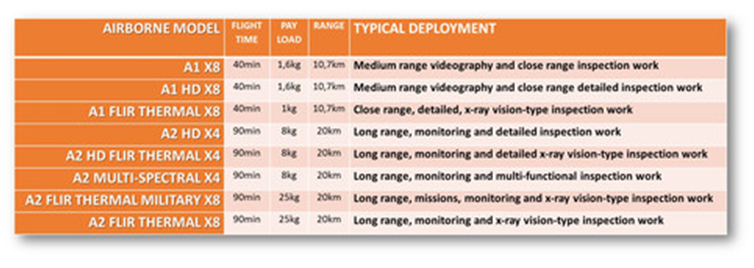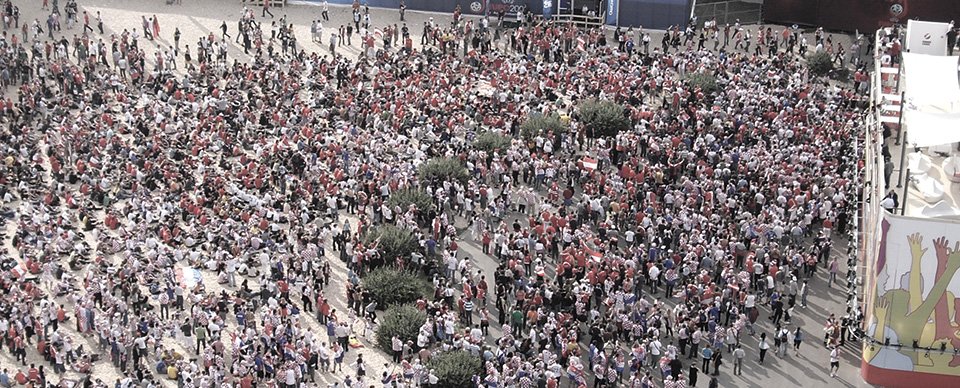Advanced Inspection of Dangerous Areas
Law enforcement teams are often assigned missions where they must enter unknown and dangerous areas. Without any additional insight, they often face elevated risks of injury. With our UAV system, the teams in the field now have a new tool for advanced video intelligence gathering. Improved situational awareness, and more informed assessment of dangers in a given area, before exposing any team members to potential injury, is certainly a valuable capability to have in the field
Small UAVs have shown to be very useful in filling the gap between more traditional means of perimeter surveillance: ground-based patrolling and helicopter-based aerial surveillance. Our UAVs are capable of carrying out autonomous and unattended surveillance along predetermined routes, recording and transmitting high-quality photos and movies. Working with GPS-based coordinates makes it extremely easy to define new surveillance routes for temporary locations – public events, VIP visits, conferences, government officials visits …Intelligent and automatic video processing can also be used for increased intrusion detection capabilities, and be used to automatically generate alerts.
The Quadcopters we distribute are with low noise and are capable to operate in tight spaces. That is a must-have for complementing traditional approaches to surveillance. . The advantages of unmanned systems are: they provide overviews which normally require several cameras; can enter narrow and confined spaces and produce minimal noise. The unmanned systems can also be equipped with night vision cameras and heat sensors to provide imagery that human eyes cannot detect. This solution can dramatically increase the applicability, improve the quality, and decrease the costs, of surveillance.
Traffic Monitoring
Traffic monitoring is performed to collect data that describes the use and performance of the road networks. Traffic data is typically used to support performance, safety and maintenance of roads. The traffic data can be collected in two main ways: automatically using electronic equipment that is set to monitor certain roads at specific times or manually by visually observing cases. Common types of traffic monitors are cameras that are fixed above the roads or helicopters. The disadvantage to these common measures is that they can only serve one particular purpose. The cameras can not be moved around efficiently, whilst the helicopter is too expensive to use for repetitive monitoring.
Alternatively, unmanned aircraft systems (UAS) can provide both. These systems can be programmed using waypoint navigation to fly specific routes repetitively, or deployed for specific roads and situations. In addition, UAS are a significantly cheaper than helicopters and could therefore be deployed more often than helicopters, which would increase overall traffic monitoring performance.
Crowd Management
When managing various types of situations where crowds can pose a risk to public safety, Our UAV can provide a definitive advantage to command-and-control teams. Having a low-noise and highly mobile aerial observation platform enables increases situational awareness, reduces risks and improves the effectiveness of the forces on the field.
We recommend Tornado H920, Typhoon Q500 4K, Phantoms Series, Inspire series, Matrice 100, A1 X4, A2-THERMAL systems and Sentinel for crowd management and surveillance. Everything you require comes packed into your kit for ‘out of box use’. Please inquire about onsite training when deciding to go with this system.
We recommend Typhoon Q500 4K, Tornado H920, Phantom or Inspire Series and Airborne drones systems for flying over populated areas as drones can recover and return to home in case of major system failure.
Evidence Gathering
Collecting photographic evidence of accidents, being on the road or in other scenarios, is a critical task for law enforcement and insurance investigators. With our UAV system, it is easier to get a better perspective of the areas under investigation, through aerial photography.
SWAT
SWAT stands for Special Weapons and Tactics. SWAT teams are elite tactical units that are trained to perform high-risk operations such as hostage rescues. SWAT team members often carry specialized firearms, are equipped with heavy body armours and are aided whenever possible by aerial assistance.
Aerial assistance in SWAT operations facilitates tactical implementation of multi-angle information. Traditionally, aerial assistance is provided by helicopters. The problem with helicopter is, that they are not kept in rural areas, which slows down response time, they are very costly and require professional personnel; and are very noisy.
A safe and more efficient alternative to helicopters is the use of unmanned aircraft systems (UAS). These unmanned systems have a very low noise footprint, cost much less and can be deployed instantaneously. As a result of the lower costs and easy deployability, aerial assistance can be provided more frequently to SWAT. Frequenter employment of aerial assistance in turn will lead to safer conditions for SWAT team members and civilians alike.
A Drones Eye View
 Our UAV Platforms:
Our UAV Platforms:
Our partner focuses on the design, manufacturing and marketing long-range UAVs (4 and 200kms), with payloads of up to 8kgs, for industrial strength commercial use. Long-range drone products have the advantage of huge benefits for commerce and business. Solutions can be developed and/or customised to meet specific client requirements. Services can include support and training during implementation, as well as post implementation.
GIDI Drone has a strong team of engineers dedicated to their customers.
We recommend Tornado H920 with V18 Camera, Inspire 1 or Matrice 100, Airborne Drone A1 X8 or Sentinel with HD Thermal systems for flying over populated areas as drones can recover and return to home in case of major system failure.







